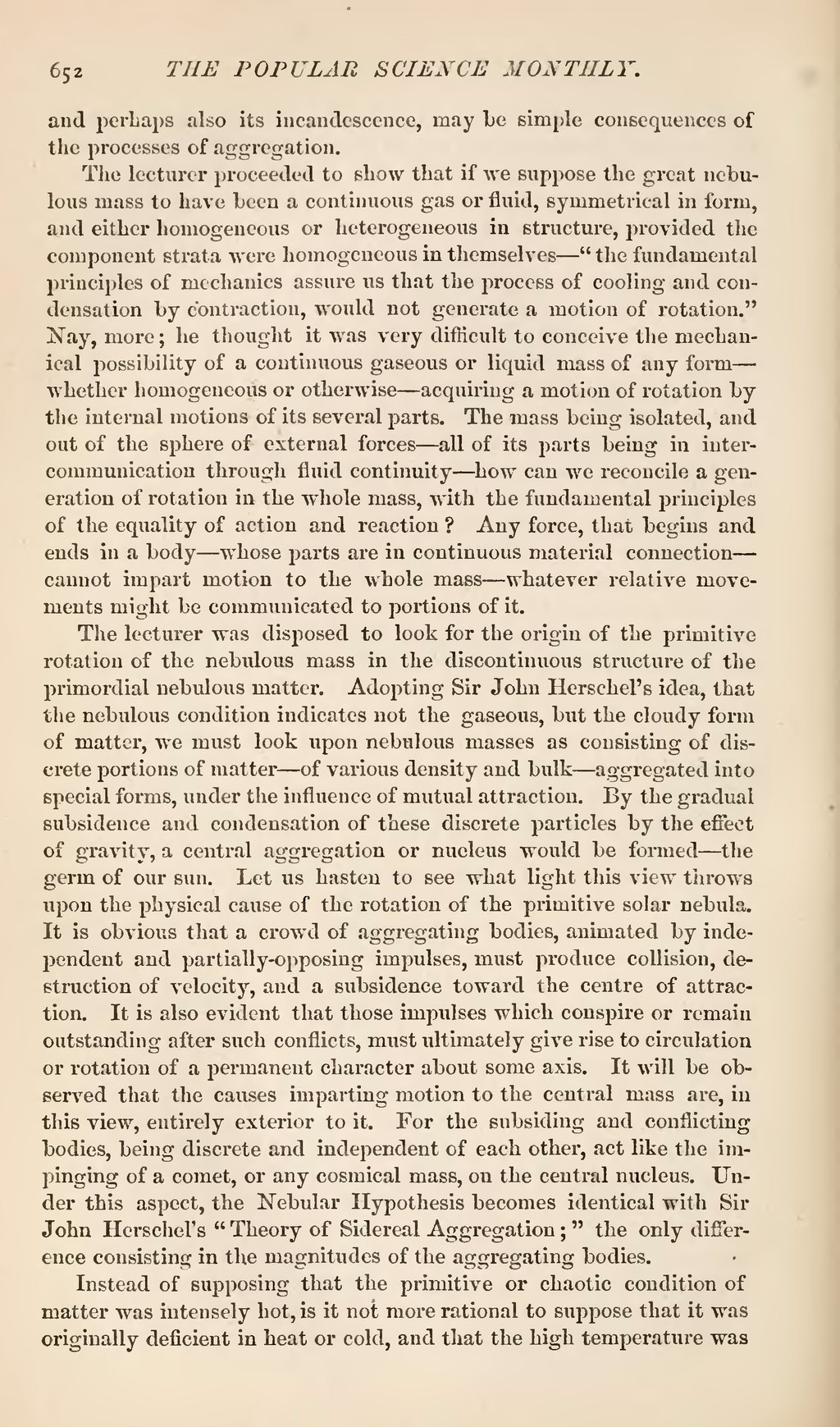and perhaps also its incandescence, may be simple consequences of the processes of aggregation.
The lecturer proceeded to show that if we suppose the great nebulous mass to have been a continuous gas or fluid, symmetrical in form, and either homogeneous or heterogeneous in structure, provided the component strata were homogeneous in themselves—"the fundamental principles of mechanics assure us that the process of cooling and condensation by contraction, would not generate a motion of rotation." Nay, more; he thought it was very difficult to conceive the mechanical possibility of a continuous gaseous or liquid mass of any form—whether homogeneous or otherwise—acquiring a motion of rotation by the internal motions of its several parts. The mass being isolated, and out of the sphere of external forces—all of its parts being in intercommunication through fluid continuity—how can we reconcile a generation of rotation in the whole mass, with the fundamental principles of the equality of action and reaction? Any force, that begins and ends in a body—whose parts are in continuous material connection cannot impart motion to the whole mass—whatever relative movements might be communicated to portions of it.
The lecturer was disposed to look for the origin of the primitive rotation of the nebulous mass in the discontinuous structure of the primordial nebulous matter. Adopting Sir John Herschel's idea, that the nebulous condition indicates not the gaseous, but the cloudy form of matter, we must look upon nebulous masses as consisting of discrete portions of matter—of various density and bulk—aggregated into special forms, under the influence of mutual attraction. By the gradual subsidence and condensation of these discrete particles by the effect of gravity, a central aggregation or nucleus would be formed—the germ of our sun. Let us hasten to see what light this view throws upon the physical cause of the rotation of the primitive solar nebula. It is obvious that a crowd of aggregating bodies, animated by independent and partially-opposing impulses, must produce collision, destruction of velocity, and a subsidence toward the centre of attraction. It is also evident that those impulses which conspire or remain outstanding after such conflicts, must ultimately give rise to circulation or rotation of a permanent character about some axis. It will be observed that the causes imparting motion to the central mass are, in this view, entirely exterior to it. For the subsiding and conflicting bodies, being discrete and independent of each other, act like the impinging of a comet, or any cosmical mass, on the central nucleus. Under this aspect, the Nebular Hypothesis becomes identical with Sir John Herschel's "Theory of Sidereal Aggregation;" the only difference consisting in the magnitudes of the aggregating bodies.
Instead of supposing that the primitive or chaotic condition of matter was intensely hot, is it not more rational to suppose that it was originally deficient in heat or cold, and that the high temperature was
